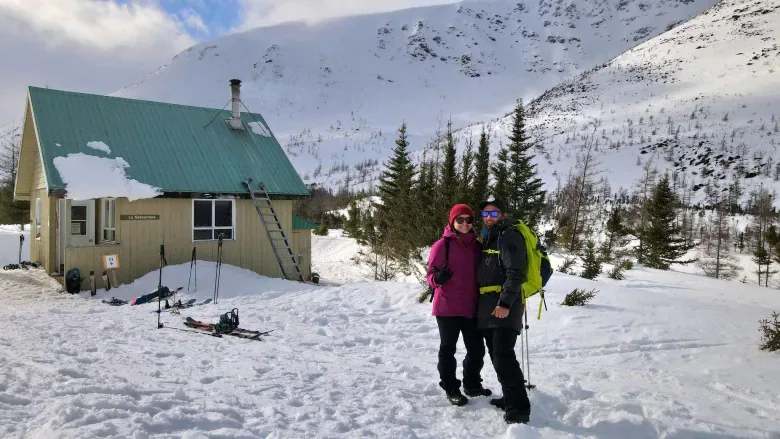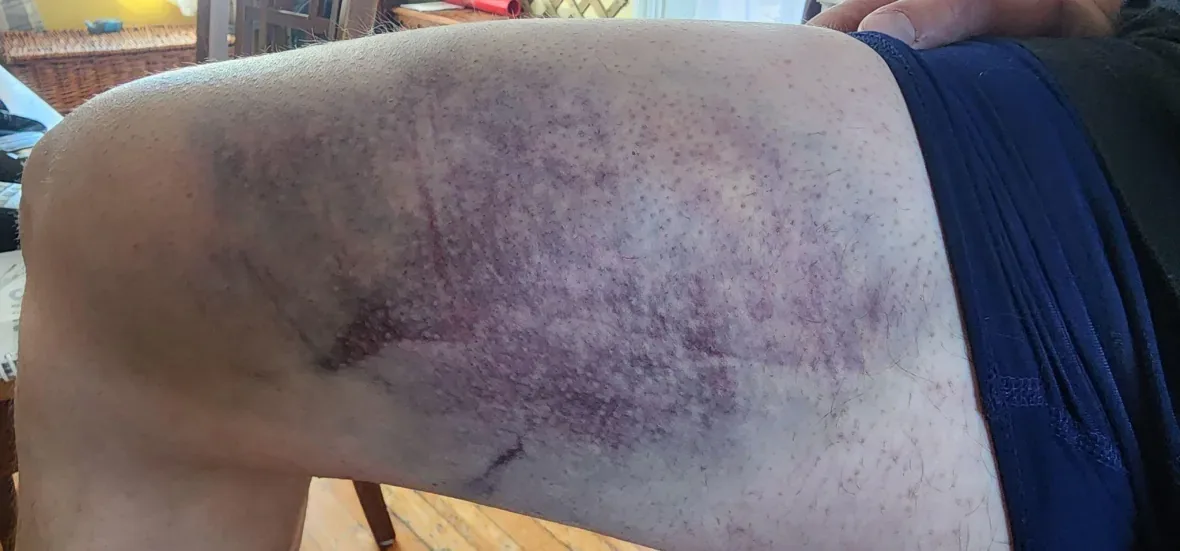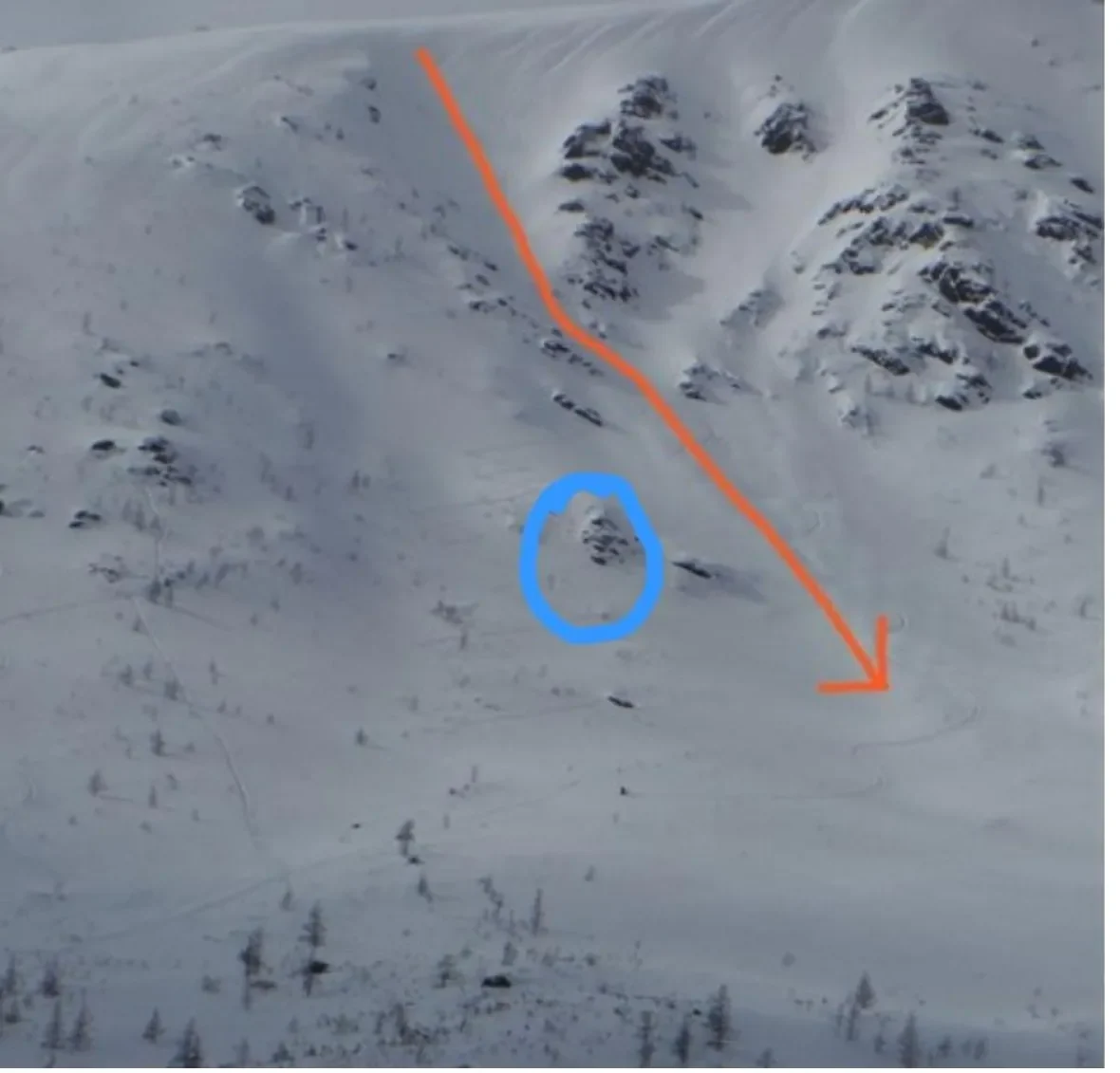
Quebec snowboarder describes surviving avalanche in Chic-Choc Mountains
Andréanne Mory was standing at the bottom of a mountain when she saw the thick layer of snow detach just above where her partner, Bruno Ostiguy, was about to snowboard.
The couple was on the final day of their 10-day trip to Quebec's Gaspé region, known for its rugged beauty and deep snow. Ostiguy was on the Mur des patrouilleurs on Mount Albert in the Gaspésie provincial park when he heard a loud rumbling.
SEE ALSO: Why March is so dangerous when it comes to avalanches
"It sound[ed] like a truck… Like you hear in the movies," said Ostiguy.
On his walkie-talkie, he heard his girlfriend, who was in a hut at the foot of the mountain, trying to warn him in time: "there is an avalanche, a big avalanche."
Ostiguy, who was standing on a rock with his snowboard strapped to his back, looked around to see what his options were.
"It was too dangerous for me to jump down the rock. So I just watched … as the snow dropped on me," said Ostiguy. "When the snow punched me on my back… I think my snowboard protect[ed] me."
Ostiguy says he was projected into the air but was lucky enough to land on soft snow which prevented him from breaking an arm or a leg. He walked away with bruises and a cut to his hand.
Ostiguy was one of three people injured over the weekend. He was transported and treated by emergency and evacuation crews after the avalanche occurred at 3 p.m. Saturday. Crews reported no one was missing and Avalanche Québec is continuing its field research to understand what happened.

Bruno Ostiguy suffered bruises on his legs and cuts to his hands. He says the snowboard he strapped to his back likely protected his head. (Submitted by Bruno Ostiguy)
Avalanche Québec was conducting tests that day
The day of the avalanche, the organization was conducting tests in the Grande Cuve (French for large bowl) area, located about five kilometres from the Mur des Patrouilleurs (French for patrollers' ridge).
Charles-Antoine Wild, assistant director of Avalanche Québec, says it is still too early to tell if there is a connection between the tests and the accident.
"We were doing compression tests that allow us to target weak layers in the snowpack to see if a fracture could occur," said Wild.

The Chic-Chocs are about 40 kilometres from the St. Lawrence River. The range is about 95 kilometres long and 10 kilometres wide. (Jean-François Deschênes/Radio-Canada)
The more traffic, the greater the risk
Stéphane Gagnon, founder and lead guide at Ski Chic-Chocs Sainte-Anne-des-Monts, was called in to offer support after the avalanche.
He says the more people there are traversing the mountain, the greater the risk that they will trigger an avalanche by venturing into weaker snow layers.
"People are wanting to go into the fresh tracks and so people are pushing a little bit further and further. So they're putting themselves at risk, especially this year," said Gagnon. He says even shallow layers can easily trigger a separation of snow layers.
Gagnon says the recent warmer and fluctuating temperatures do not help the situation.
"We have a lot of ice layers warming up after snow events with rain events and making it have persistent weak layers. And so what happens is that having a lot of people travelling onto these weaker layers, there's the possibility of triggering the sweet spots," said Gagnon.
He says people need to be aware of the risks associated with this kind of activity — and be prepared.
"Having the proper equipment and then the education to be able to to use the equipment in case something would happen, but also to help forecast to see what the different problems are," said Gagnon. "[They should] read avalanche bulletins in areas where they are available."
WATCH: Canada keeps highways safe with avalanche control unlike any other
'I was sure I would die'
Ostiguy and Mory said they did feel prepared to handle the mountain. Ostiguy says he had done his research and had checked the avalanche bulletin that morning.
"Safety is very important to us, so we had all the right equipment," said Mory. "It just happened…[So] don't take avalanches lightly."
Ostiguy was about halfway down the mountain when the avalanche occurred.
"This time I was sure I would die. I had time to think and to relax … It was too big to survive."

Bruno Ostiguy was in the middle of Mont Albert on a rock, inside the blue circle. He says the orange line shows where the avalanche started. (Submitted by Bruno Ostiguy)
Just 30 seconds after the snow settled and he found himself alive and in the soft snow, Ostiguy said he was able to answer his girlfriend and tell her he was okay.
He says just thinking back to that day makes him sweat.
"I was very, very lucky," said Ostiguy. "This year I don't think I [will] go back. But I cannot fear this mountain. I have to respect it. I'm sure in my life I will return … but I have a lot of things to learn before I return."
Thumbnail courtesy of Bruno Ostiguy via CBC.
The story, written by Rachel Watts and Jennifer Yoon, was originally published for CBC News. It contains files from Radio-Canada.









